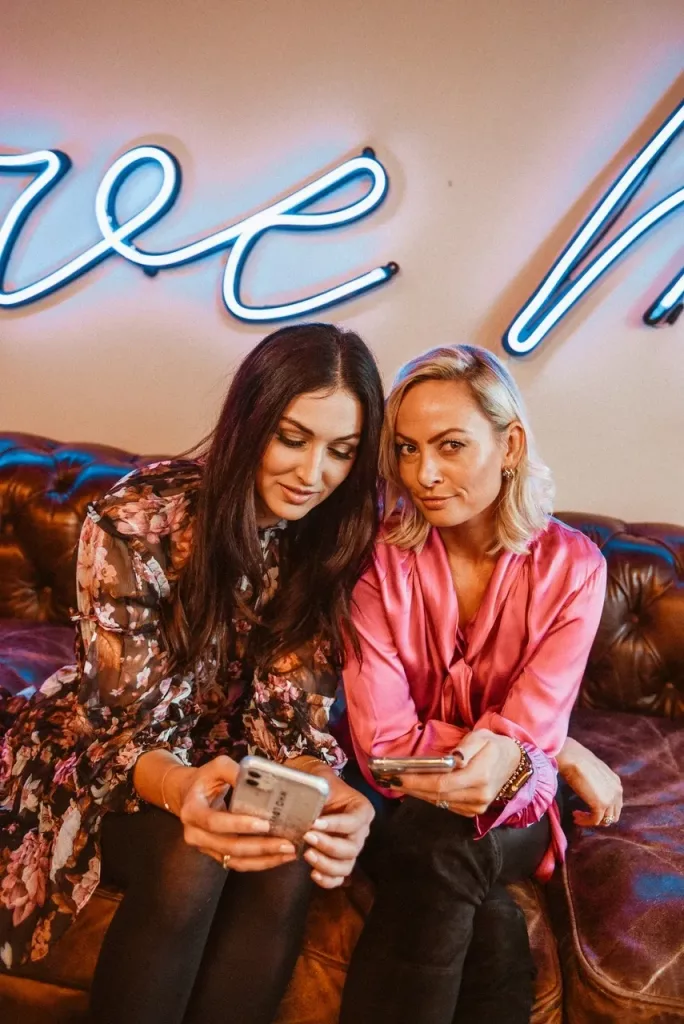11 February 2021|Business Growth, Latest Posts, Launching a business

Hands up if you know the contents of your wardrobe? If you’re guilty of overbuying, underusing and not really valuing fashion. Find yourself buying online more and more, and swapping paper receipts for e-receipts? Perhaps you’ve sold unwanted items on resale platforms, labouring over the listing. Or maybe you’ve explored the sharing economy for clothes, like rentals or lending? Ever shared your outfits Instagram aka the #outfitselfie? And moreover wondering how it got to 2021 and you still don’t have your wardrobe on your phone, given that in every other area of your life like banking, music, or buying coffee from Starbucks, there’s an app for that.
This was us; all of the above. In late 2018, we (Lexi & Marina) realised our own behaviours with fashion were changing, and not always in a good way. We were over-consuming, spending more on fashion than we’d ever done before, with very little consciousness of our closets; first thinking to buy rather than borrow for one-off wears. That year we’d both worked in consumer tech, seeing incredible AI being applied to FinTech and PropTech consumer products and one evening Marina asked a simple question, why are we not using this tech to manage our wardrobes given its significance in our lives and given that it had fast become one of our highest areas of spend. That’s before we mention the negative environmental impact of our fashion ways. We saw the gap and intuitively, we thought the answer could lie in a lateral thinking consumer tech that was built around fashion behaviours.
Early 2019, we quit our jobs and committed to an LBD product development journey; examining areas of tech that were being used to service the fashion industry, as well the fashion consumer. We also looked at emerging and growing businesses and associated models that involved the management and monetisation of existing fashion, such as styling apps, centralised wardrobes, rentals, peer-to-peer rentals and resale.
By Summer ’19 we realised that our product started with a digital wardrobe. We’d identified other older wardrobe products in the space; we categorised these as first wave wardrobes. These are often anchored on the upload process or the in-app style board. These products could be useful but weren’t didn’t really entertaining or create a compelling reason to digitalise wardrobes.
We shifted the design perspective; deciding instead to focus on engagement with fashion, making the upload process an implied activity rather than the main concentration.
Having reached out via our networks to find a tech partner to help us realise our vision, we were fortunate to find a lead mind and team that understood our product thinking. A pre-seed raise allowed to go forward and our tech partner helped us translate the UX&UI. From there we started to build the backend engine and the front end user experience. Crucially our tech lead had a background in fashion and retail, understanding supply chains and data points that could help not only the user experience, but also our wider ecosystem. That expert space experience was super helpful for us. In the meantime, we skilled up, adding experienced consumer tech vets to our advisory team who offered backgrounds from international consumer tech brands like eBay, Paypal, Caffeine TV and Uber.
By Jan 2020 we were able to pilot our first iteration of the LBD product, initially setting out to onboard 100 users within a closed market test (our Beta 1.0). We trialled the product for around 3 months, focussing on high fashion suspenders and Gen Z communities, creating test groups with Imperial College London and the like. The pilot gave us some invaluable feedback and insights which we used to work up our minimum viable product (MVP), the timing of which coincided with the starting months of Covid.
For us lockdown gave us time to step up the design with a heavy social layer, adding more community features, tapping into sharing functions, as well as building in adjacencies with retail to help grow a user’s digital wardrobe quicker. During this home based experience, we evidenced first hand and across social media that women were showing high organisational behaviours in relation to their wardrobes, using lockdown to organise and declutter their existing collections, to resell and to take notice of what they owned. A greater dialogue emerged on the topic of investing in better, and rejecting cheap fashion. So we’ve embraced this heightened interest in capsule wardrobes and sustainable wardrobe ways into the product design and our brand.
Simply LBD, The Social Wardrobe App is a way for the fashion consumer to see, style and share their collections (online and off) with friends and their fashion community. We’re building an entertaining wardrobe world and community that is designed to drive better behaviours with fashion. By taking a platform first approach to our tech build, we can work with retailers to give their customer base a virtual wardrobe experience, adding items to their wardrobe as they buy. We effectively step the offline customer to the online realm and extend their purchase experience, whilst helping them to remember and engage with past, present and future purchases. In treating each item as a virtual data set this becomes useful for starting listings on partner resale platforms.
For us, we’ve taken our experiences, our ideas, our research and our networks to deliver a working platform in just about 18months. LBD is a lateral thinking product that truly aims to be the future of fashion interaction.
Website: https://littleblackdoor.io/
Instagram: https://www.instagram.com/lbd.app/
Founders: Lexi Willets and Marina Pengilly
- lisafoundersitehttps://thesuccessfulfounder.com/author/lisafoundersite/
- lisafoundersitehttps://thesuccessfulfounder.com/author/lisafoundersite/
- lisafoundersitehttps://thesuccessfulfounder.com/author/lisafoundersite/
- lisafoundersitehttps://thesuccessfulfounder.com/author/lisafoundersite/






